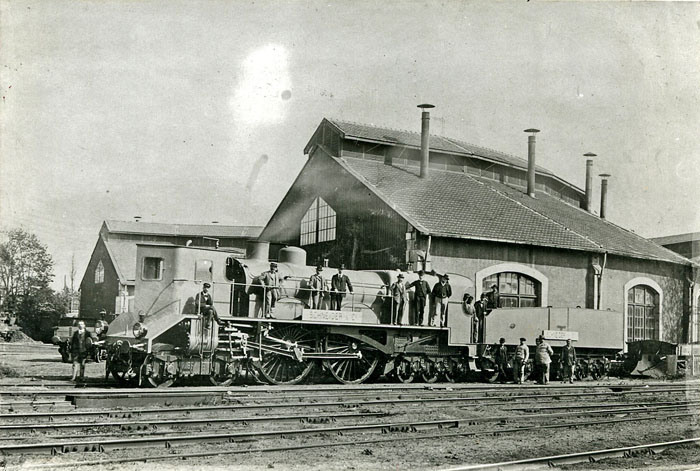- Thuile locomotive
Infobox Locomotive
name=Thuile
powertype=Steam

caption= Thuile loco at Chartres, 1900
designer=Thuile
builder=Schneider
builddate=1899
railroad=Chemin de Fer de l'Etat
whytetype=4-4-6
leadingsize=convert|1.06|m|ftin
driversize=convert|2.5|m|ftin
trailingsize=convert|1.06|m|ftin
wheelbase=convert|12.25|m|ftin
length=convert|24.80|m|ftin (locomotive & tender)
boilerpressure=15 kg/cm2 (213 lb/in2)
firearea=convert|4.68|m2|sqft
totalsurface=convert|297.70|m2|sqft
cylindercount=2
cylindersize=510 x 700mm
(20 x 27½ in)
gauge= 4ft 8½in (1435mm)
retiredate=
weight=convert|80.60|t|LT|lk=on
topspeed=convert|117|km/h|mph
firstrundate=
retiredate=
currentowner=
scrapdate=1904 (locomotive), post 1946 (tender)
The Thuile locomotive was asteam locomotive designed by Monsieur Thiule, ofAlexandria ,Egypt .History
Thiule proposed a 6-4-8 or 6-4-6 locomotive with convert|3|m|ftin|sing=on diameter
driving wheel s, but this was not built.cite web | url = http://myweb.tiscali.co.uk/peclegg/sncf/article_2006_08.html| publisher = SNCF Society| title = BIG WHEELS FOR HIGH SPEEDS| accessdate = 2008-04-01 ]The design was taken up by Schneider, of Le Creusot, who built a
4-4-6 with convert |2.50|m|ftin|sing=on diameter driving wheels, and a forward cab for the driver. The two cylinder locomotive hadWalschaerts valve gear and a double lobed boiler of nickel-steel. The locomotive was exhibited at the International Exposition inParis in 1900 and the trials were undertaken on theChemin de Fer de l'Etat line betweenChartres andThouars . A speed of convert|117|km/h|mph was attained hauling a load of convert|186|t|LT.The trials ended when Thiule was killed in June 1900 - apparently by leaning too far out of the locomotive and being in collision with a lineside pole.cite web | url = http://www.dself.dsl.pipex.com/MUSEUM/LOCOLOCO/thuile/thuile.htm| publisher = Douglas Self| title = The Thuile Cabforward| accessdate = 2008-04-01 ] The locomotive was returned to Schneider. It was scrapped in 1904. The tender survived until at least 1946, when it was noted at Saint Pierre-des-Corps.
References
Wikimedia Foundation. 2010.
